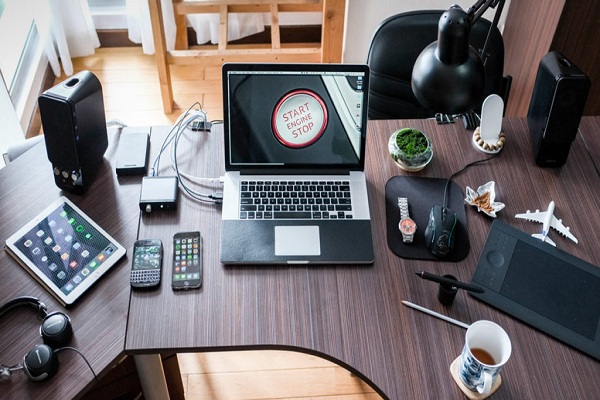When you are working from home, it is important to have the right technology in place. Over the last 2 years, businesses all over the world have rushed to implement remote working due to the onset of COVID-19. Due to this, many users have not had all the time they need to set up a proper and productive working-from-home environment for themselves.
Most tech companies agree that because remote working is a digital solution, doing it properly requires technology. We spoke to TechQuarters, a company that provides IT services in London, and they described what they think are the top pieces of technology that optimize working from home.
1. The Cloud
This is the main technology that has enabled businesses to go remote and have their employees work from home, because it helps businesses access data over a network, from any location. A Cloud is a network-based environment supported by a network of servers or datacenters – a Cloud can be accessed from anywhere, so long as the user is connected to the internet.
This is an essential technology for working from home. One of the main benefits at the user level is that it means employees can find all their important files and documents easily in the Cloud. It also means employees don’t have to store all their files on their local device –storing everything on the hard drive in your device can slow it down and make it less efficient.
2. Mesh WiFi
Wi-Fi is probably the most important technology on the employee’s side of things, because without it they wouldn’t even be able to communicate with the business, left alone access data from the Cloud. In traditional offices, a business would use an ethernet network, along with on-premise servers – employees wouldn’t need to connect to the internet directly; but when working from home they do, and so reliable Wi-Fi is a must-have.
Some users may have trouble with Wi-Fi connection in their house or apartment – so rooms may have great connection, whereas others do not; and you might not be so lucky as to be able to work in the room with the best connection. The solution is using a Mesh Wi-Fi network – this is where the main Wi-Fi router is accompanied by a number of peripheral routers, which spread the Wi-Fi connection evenly throughout one’s home, thus ensuring strong Wi-Fi connection everywhere.
3. Wireless Keyboard & Mouse
Having wires all over one’s desk is always a pain, and if you are using a laptop, you don’t want to be limited to the built-in trackpad; plus, the keyboard on one’s laptop might not even be a full-sized one. This is why investing in a wireless keyboard and mouse is a good idea. Not only does it clear your desk of some wires, but it means you can use the size of keyboard and mouse you want, and you can position them wherever you want.
There are lots of good choices on the market. If you have multiple devices you use for work, you can even get a Bluetooth keyboard that pairs with multiple devices at a time, and so switching between devices is as easy as pressing a button.
4. Headset
One of the main characteristics of good remote working is frequent calls and video communication. If you’re going to be taking lots of calls, you don’t want to have to be picking up your phone all day. What is more, if you have other people in your home working as well, you don’t want to distract them with lots of calls. This is why having a good headset is a key technology.
5. Dual Monitors
Office working involves a lot of multi-tasking and using multiple applications at the same time. There are a lot of great solutions for balancing windows on your computer – for example, in Windows 10 and Windows 11 there are snap function that allow you to resize windows and snap them into 4 different quadrants on your screen, so you can be looking at 4 different apps or windows at once. The only trouble with this is that the more windows you have open at once, the smaller they will be.
This is precisely the reason why many office workers opt to use 2 or more monitors. Of course, when you are working from home, you probably won’t have unlimited space to work with, but having a dual monitor setup is easier than you think. It can help reduce eye strain because your displays will be bigger, and it improves multi-tasking.
6. Laptop Stand
Some people may not have a desktop with a separate monitor; instead they are working with a laptop. Of course, laptops are very versatile and have the benefit of being portable; but they are also not very good for your posture. People tend to slouch when using a laptop, and this leads to sore backs, stiff necks, and eye strain. The solution is to use a laptop stand, to raise the screen of your laptop up to your eye level. Having the screen raised up will encourage you to straighten your back and your neck, thus keeping your posture in a neutral position. A laptop stand in combination with a wireless keyboard and mouse can improve your posture at work a great deal.

No comments:
Post a Comment